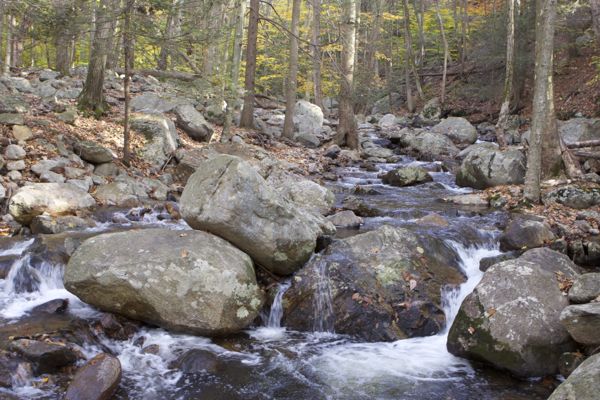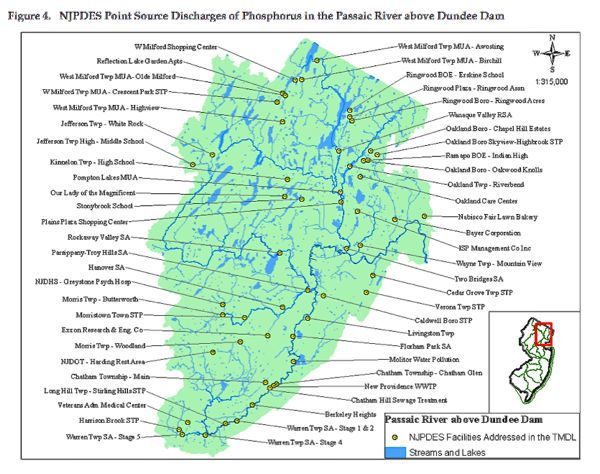Mission Accomplished In The Pequannock Watershed?
Despite Media Reports, Serious Threats Remain Unaddressed
[Intro Note: Record Reporter Scott Fallon could have written an Obit about all the “good works” of PRC. But he didn’t do that – instead he chose to print a lie: that there’s no more work to be done.
I am not willing to let that lie stand. ~~~ end intro]
The Bergen Record reported yesterday that the Pequannock River Coalition had called it quits – declared “Mission Accomplished!” -and was closing up shop:
Executive Director Ross Kushner announced the end of the organization in its April newsletter. He said the group had “worked its way out of a job” by accomplishing most, if not all, of its goals for a river that meanders through Passaic, Morris and Sussex counties. …
…. “There’s just not enough happening right now to keep an organization going.”
Not enough happening? Are you kidding me?
Not since George Bush declared “Mission Accomplished” in Iraq has a more misleading statement been uttered.
Lest readers be deluded, let me list just a few big things that are “happening right now” that continue to threaten the Pequannock watershed.
1. Logging by NJ Audubon in Newark Watershed
NJ Audubon conducts commercial logging in Newark Watershed lands. (see one example). For the entire NJA program, see this audit document).
NJ Audubon conducted that in “partnership” with one of the most notorious “rampantly corrupt” institutions in NJ’s history, the Newark Watershed Conservation and Development Corporation:
NWCDC is partnering with New Jersey Audubon to pursue Forest Stewardship Council certification of its proposed stewardship plans and management in the watershed. FSC certification is a voluntary, market-based tool that supports responsible forest management worldwide.
According to the Wall Street Journal:
A state comptroller’s report last year blasted the watershed corporation for an “egregious abuse of public funds” and criticized it for operating with little oversight from the city, then run by Mayor Cory Booker, now New Jersey’s junior U.S. senator.
Are we supposed to take it on faith that this “rampant corruption” had no impact on NJA logging “partnership” with NWCDC ?
Ross Kushner, Executive Director of the now defunct Pequannock River Coalition, may not have raised this concern publicly, but he raised strong objections to NJ Audubon’s logging project in the watershed.
Here is what Ross wrote:
We have two concerns: First, the wild trout of the Pequannock River and its tributaries are one of the most important and sensitive wildlife resources in the area covered by this plan. Yet, we find no mention of these fishery resources in the plan. This should be amended. The status of riparian forests is directly related to the health of these fish and other coldwater species, especially within the Pequannock system, where water temperature and flow problems are commonplace. Second, the passage of Hurricane Sandy had an immense impact on the forest cover in this area. We urge NJAS to review these changes in relation to the plan and adjust it accordingly. (emphasis mine)
(see NJA’s lame reply, including to my criticism).
I have no idea why Mr. Kushner seems to have pulled his punches and not raised this issue publicly.
[Update: I stand informed – my friend Scott Olson advises that Kushner supported logging on Sparta Mountain back in 2012, before anyone even knew it was happening, see:
Highlands advocates are battling NJ Audubon logging plans in three forests: Sparta Mountain, Weldon Brook, and Mahlon Dickerson.
For some reason, the Newark watershed logging has stayed under the public radar.
Logging is occurring despite designation as a “State priority watershed” under the DEP’s 2007 Stewardship spatial analysis:
State Priority Watersheds:
Priority watersheds were selected by HUC 11 series units using data from the NJ Bureau of Freshwater and Biological Monitoring Program. The Category 1 (C1) Streams were selected due to their high ecological resource and recreational values. Values are related but not limited to drinking water, fisheries and aesthetics. Category 1 waters are defined by the regulations on Surface Water Quality Standards N.J.A.C. 7:9B. In addition to C1 streams, the NJDEP Wild and Scenic Rivers (WSR) coverage was added. This data set targets stewardship planning activities in order to maintain the high resource value of the water management unit, encouraging the continued protection and improved water quality of these priority watersheds.
2. Climate Change
Climate change is having impacts now on forests and water resources, including: extreme weather; more intense and frequent heavy rainfall and flooding: more prolonged dry periods that create drought stress; , and increased temperatures, which effect everything from eutrophication, to dissolved oxygen and the health of aquatic life.
For the science and projected impacts and risks:
- National Climate Assessment for the Northeast
- IPCC 5th Assessment – Terrestrial and Inland Water Systems
3. Christie DEP regulatory rollbacks
The Christie DEP has engaged in a systematic rollback of key water resource planning and regulatory protections, scaled back monitoring and enforcement efforts, and weakened the Highlands Council and its implementation of the Highlands Regional Master Plan (RMP).
These regulatory changes will promote more development in environmentally sensitive lands and threaten all waters of the State, including the Pequannock watershed.
These rollbacks include:
- water quality management planning rules (pending adoption)
- stream encroachment rules (AKA Flood Hazard rules) (pending adoption and Legislative veto)
- repeal of category one waters buffer protections (provision of stream encroachment proposal)
- Highlands septic density standards (pending rollout)
- revisions to the Highlands RMP by the Highlands Council (from the LSP collaborators))
- diversion of DEP water resource funds by the Open Space ballot question
- budget cuts & attrition of experienced DEP professionals
- reduced field and water quality monitoring and gutting of enforcement
- expanded destructive “stream cleaning” as a sham flood control measure (“streamlined!”) – take a look
- revisions to groundwater standards (“by invitation only“!)
- expanded logging in Highlands forests under the guise of “Stewardship”
Of course there are a multitude of other threats, from oil and gas pipelines and other development, to acid rain and ozone air pollution impacts on forests.
There is so much going on right now that impacts the Pequannock watershed I hardly know where to begin.
Of course, these threats also must include the money issues, and why well endowed Foundations like the Dodge and Wm. Penn Foundations are not funding advocacy work to inform the public, hold DEP and elected officials accountable, and organize opposition to these threats.
I guess that’s too old school – stepping on too many corporate and political toes. More likely is that the Foundations have abandoned a focus on government and that kind of politically risky work, in favor of voluntary feel good measures, cultural events, and symbolic gestures.




